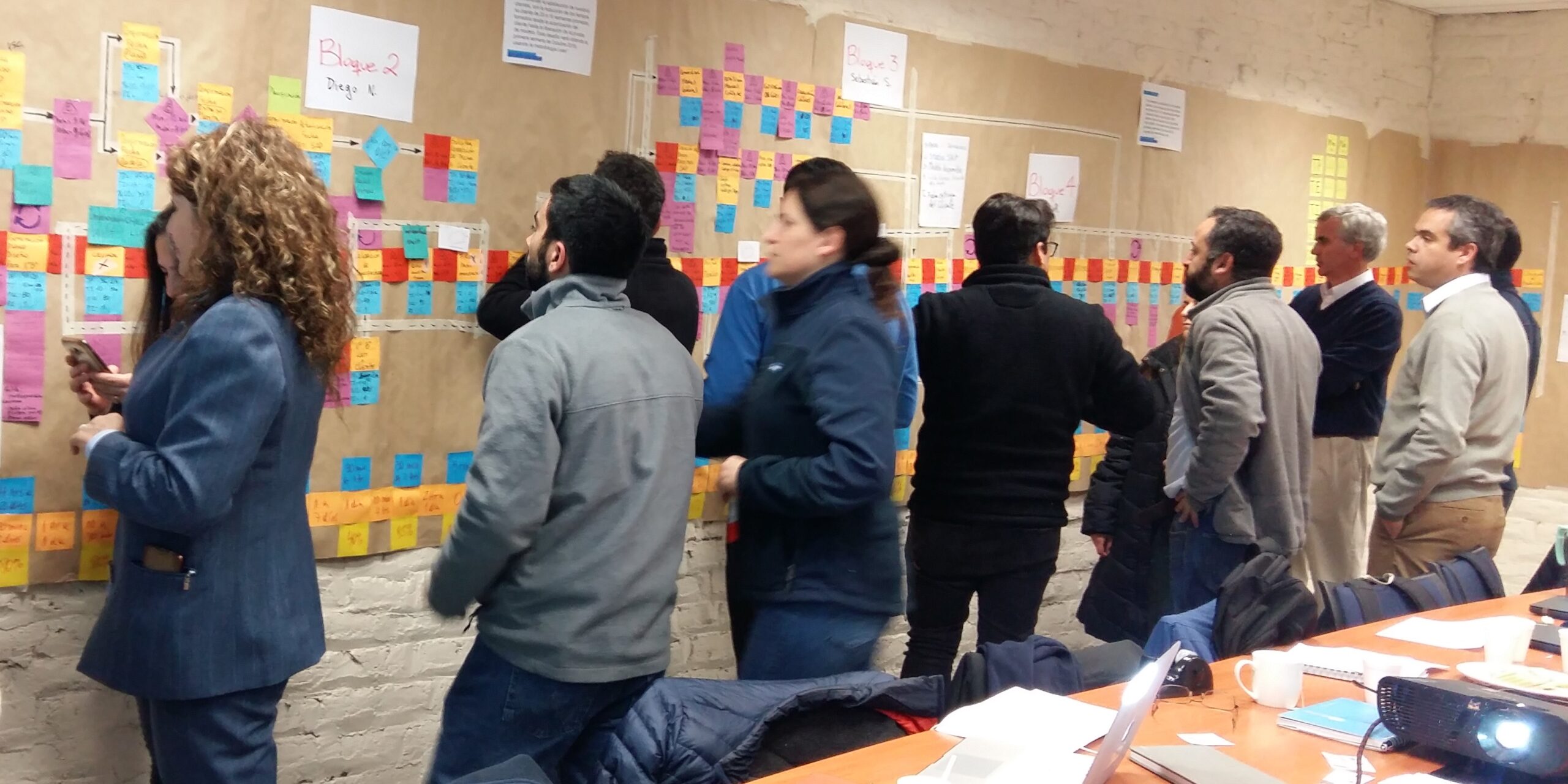
Benefits and difficulties of using a Concept Paper
CASE STUDY – TechnipFMC has introduced the Concept Paper in its lean product development process. This article shares some of the learnings resulting from the experience.
Words: José Ferro with Paulo Couto, Alan Labes and Fernando Rodrigues
Back in 2014-2015, as part of its efforts to transform its engineering practices using LPPD principles, TFMC (a company designing equipment and services for the Oil & gas industry) decided to begin using the Concept Paper in the development of new products. Since then, more than three dozen papers have been written, focusing on anything ranging from the development of complex systems to new production processes.
For more on what a Concept Paper is and how it is developed, check out this article (you can also read this or the book Designing the Future). In this piece, we will look back and reflect back on what the deployment of Concept Papers has meant for the company - from key learnings to the improvements achieved.
Let’s begin by saying that before these experiments with the Concept Paper, TFMC’s product and project development processes tended to be very loose and lacked a clear purpose (other than “meeting customer requirements”) and objective targets. Responsibilities were often not defined, timelines were not followed and, because dates and deliveries were flexible and ever-changing, being late was considered normal. Cost reduction targets were rarely achieved, as resources were seen as abundant (there was little cost awareness). And these were only some of the problems.
The hypothesis TFMC wanted to test was that by using the Concept Paper, some of these issues could be tackled at the very beginning, in the planning phase of the project, when the overall expectations for the execution phase were being defined.
The company also decided to create a new role, the Chief Product Developer (CPD), appointed by a senior sponsor and tasked with writing the Concept Paper.
In this article, we will focus on the benefits of using the Concept Paper, the challenges encountered and the suggested improvements for future projects. So, here are some of the things we have learned.
THE BENEFITS
The evaluation carried out by TFMC leaders and teams revelaed a number of improvements brought about by the use of the Concept Paper in the initial phase of new projects. These include:
1) Clarification of product value.
One of the initial benefits experienced by TFMC at the beginning of their LPPD journey was the ability to define specific targets for development projects. However, the use of the Concept Paper helped them to go beyond that, making it easier to clearly identify what value a product intended to provide for the customer. It also helped to define key product features, enabling the team to focus on the product that the company wanted to deliver and preventing random ideas to distract the team during the execution.
With the “must-haves, must-not-touch, and nice-to-haves” having to be defined early on, the project leader and the CPD were forced to reflect deeply and decide the key product features before starting the project. This, in turn, forced the company to better understand and define customer value – rathan than just responding to specifications – and allowed them to define viable targets.
Another important contribution was the alignment of product targets around their physical attributes – size, weight, and part count – instead of just cost. In the Engineering-to-Order environment, with each project being unique, it was always challenging to have clearly comparable, historical data on cost. The Concept Paper allows the team to challenge the current designs and define substantial improvements in the product architecture where no value adding features were found.
2) Knowledge creation, personal growth development opportunity, responsibility, and empowerment of project leaders (CPDs).
Giving an individual the responsibility of writing the Concept Paper at the very beginning of the project forces him/her to develop their capabilities, broaden and deepen their knowledge of the product to be developed. It also gives them an opportunity to really understand customer needs, connect with the commercial area, understand the product design alternatives from the point of view of manufacturing, supply chain and service, and as important, grasp the development process both from a technical and a social/leadership perspective.
The Concept Paper can therefore be used to develop key engineering and business capabilities as the project leaders take individual responsibility for the development process and for critical decisions.
3) Better definition of the roles and responsibilities.
The Concept Paper helps to identify the main people involved in a project, starting with a sponsor, who will then pick the project leader, who in turn assembles the core and the supporting teams in the very beginning of the project, creating the necessary stability and flow to facilitate the execution.
By defining the jobs that individuals involved in the project are expected to perform, it becomes easier to keep the focus throughout the execution, avoiding a situation where too many people provide random opinions often loosely articulated, if not contradicting project targets (one of the primary sources of knowledge waste - see pages 44-47 of Lean Product and Process Development).
4) Agreement and alignment around objectives.
The Concept Paper is used as a “contract” between the project leader, the sponsors and stakeholders, the core team, and the support areas. During the writing process, it enables healthy discussions that lead to a document that represents the vision and the ideas of the key people in the organization about the product to be developed.
More than allowing agreement within the core project team, the Concept Paper provided TFMC’s senior management with alignment around the product vision and definitions, making the development process and project execution more transparent and clearer from the very beginning, which preventing feet-dragging, indecision and constant pivots to slow down the development process.
5)Improvement in communication.
As the Concept Paper specified purpose and targets, it became a great communication tool for the organization – even for those who weren’t engaged in the writing process. It also served as a constant reminder to the sponsors and the team, including the leader him/herself, of what was defined.
The Concept Paper is an expression of what leaders, sponsors, and the core team have in mind. Sharing this information with those who will support the project creates the necessary engagement and commitment from those that are not fully dedicated to the project yet, continuously involving others as the project evolves.
The main elements of TFMC’s Concept Paper, such as the vision, targets, features etc., were all publicly displayed in the obeya space and often summarized in an A3, also used as a communication mechanism.
6) Definition of the features and elements for set-based concurrent engineering development and the expected experiments and learnings.
Since the expected features and design alternatives were negotiated prior to the start of the project – in the study/writing phase – the brainstorming sessions to generate new ideas, concepts, and alternatives around SBCE (set-based concurrent engineering) experiments designed to be run during the execution phase were substantially more focused and objective. Thye allowed for deeper learning than the previous attempts had.
7) Maintaining focus during the execution.
The Concept Paper defined clear deliveries – what had to be delivered in what specific time frame during execution. The explicit use of visual management to make the work transparent and the use of milestones as pulling events to create the cadence and flow protect the main targets from opinions and criticism by people that were not directly involved in the development process. (Previously this had steered the project in the wrong direction.) Having integration events when people from different areas are asked to criticize the project at different stages is more helpful when the purpose is clear.
A timeline was clearly defined and visualized, which allowed teams to keep the project on track and maintain the discipline of daily management routines, design reviews, ideas deselection events, etc.
8) New behaviors and attitudes.
The use of the Concept Paper promoted a change in the behavior of leadership. In the past, whenever a project was to be presented to leaders for sanctioning, a shallow (and quite frankly, boring) Power Point presentation would be created. Very few people would actually attend the meeting, and the leaders didn’t participate much – they’d just make a few remarks. There was no commitment among attendees.
Now TFMC has a contract to be signed, making people’s commitment intrinsic to the process. This change in the process ensures the leadership needs to read the Concept Paper thoroughly, really understand the purpose of the project, and agree with the plan. This way, leaders participate and ask relevant questions, which eventually leads to better products. In the same way, the development team is given a clear purpose and a framework to discuss technical issues. To optimize the writing of the Concept Paper, a lot of emphasis was placed on data gathering at the gemba.
THE OBSTACLES
The benefits outlined above were enough to convince TFMC to make the writing of a Concept Paper at the start of any new LPPD project, as a critical process for a successful development. But it has not been smooth sailing at all. There were challenges, learnings and obstacles throughout. Tackling them will lead to better results in the future. Here are some of the challenges the company was faced with, which exposed some weak points in the current development system and project management approach:
1) Project leader’s capabilities and knowledge.
Being a CPD and writing a proper and thourough Concept Paper requires skills, capabilities, and knowledge to lead in LPPD way, a development program. This entails broader responsibilities and an entrepreneurial spirit.
For example, development of new products requires deeper understanding of market needs, better knowledge of manufacturing processes and supply chain issues, same with economic and business implications. The notion of not only creating great products, but also their profitable sustainable value streams.
2) Short study phase.
Writing a complete Concept Paper for fairly complex projects with major challenges and very ambitious targets requires time. Sometimes, it became difficult to align this notion with all stakeholders, conventionally wired towards “fast solutions”.
The basic process of gathering and collecting data was not as simple and quick, as one would have imagined. Often times, it required much effort in the limited time given – especially when new research was necessary, coupled with the deep thinking and multiple discussions that must be had with stakeholders.
3) Constant revisions.
Most papers had to be revised throughout the project development. The scope and targets became clearer as the projects evolved, milestones were reached, and changes had to be made. In fact, the Concept Paper is a rather flexible tool.
Targets often changed, as new knowledge gradually emerged during execution, the connections with other areas became more evident, a deeper understanding of the technical issues and the new knowledge created was reached, new interactions occurred or definitions emerging in other parallel projects impacted one another.
This revision process, however, was often erratic. Sometimes, it was not done formally, creating some confusion. Other times it took too much time and effort to align all the stakeholders. The relative short period of time allocated to the writing of the Paper was also a contributing factor causing those constant changes.
4) Late definitions.
At times, clearly defining the team and the knowledge required up front was not an easy task. Quite often, additional team members (like experts from support functions or prototype production organizations) had to join at a later stage of the project, the need for which became evident in design reviews and/or deselection events or when some projects faced major technical challenges that required extra help.
5) Persisting lack of alignment among stakeholders.
Implementing a culture of Concept Papers as an “internal contract” requires time and huge alignment efforts. This is a concept that simply takes time for senior managers to absorb. Too often, the CPD was not properly mentored by sponsors, who did not understand clearly their support role and ended up not helping the CPD to engage with other key people.
It is hard to identify where the company information and knowledge could be found. Key knowledge within the organization is eventually only brought in when some sort of crisis emerged or critical gaps were identified.
It was also often hard to identify the key stakeholders. Senior managers felt they could have a say at different stages of the development, sharing differing opinions that had to be accommodated. This resulted in an inefficient project and in excessive variation in the alternatives put forward (often misaligned with the initial targets).
THE COUNTERMEASURES AND CONCLUSIONS
TechnipFMC is constantly trying to improve and deepen the application of LPPD in their organization. Practically, all CPDs and senior leaders recognized the clear benefits of writing a Concept Paper to start a development program. Constant improvements are needed though, and the company is already working on them. These include allowing more time for the study phase, clarifying the definition of responsibilities, creating knowledge maps, establishing a Concept Paper revision process after key milestones, and more importantly enhancing the capabilities of the CPDs.
The more these principles are used, the deeper the knowledge and the bigger the benefits. As the company continues its learning journey and evolves its practices, we can expect they will be able to improve their use of the Concept Paper and make it a key element of Product and Process Development. The company recently created a CPD Club, an informal group composed of all the CPDs who have been reflecting on the current project practices – including the Concept Paper – and making suggestions on opportunities for improvement.
THE AUTHORS


José Ferro is Founder and President of the Board at Lean Institute Brasil


Read more


FEATURE – Hospitals are often part of larger healthcare systems, which makes it critical to learn how to bring lean to such diverse and complex environments. We hear from a large hospital group in Ireland.


FEATURE – In this compelling theoretical piece, the author reminds us how in a lean organization relations are structured around learning opportunities rather than execution. This is what ultimately enables a company to grow.


INTERVIEW – Top leaders at Chilean company Elecmetal talk to us about how lean has transformed their role in the organization and how capability development is fuelling change.


INTERVIEW – We speak with Sérgio Caracciolo of General Motors do Brasil about the carmaker’s approach to lean, its struggles, and its lessons learned.

